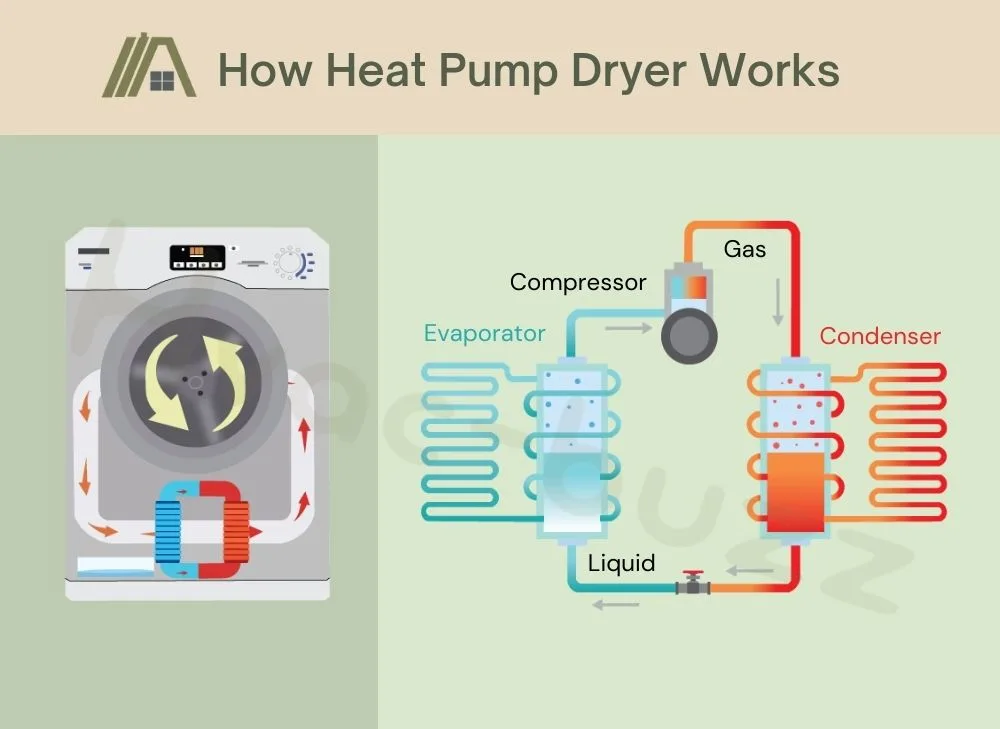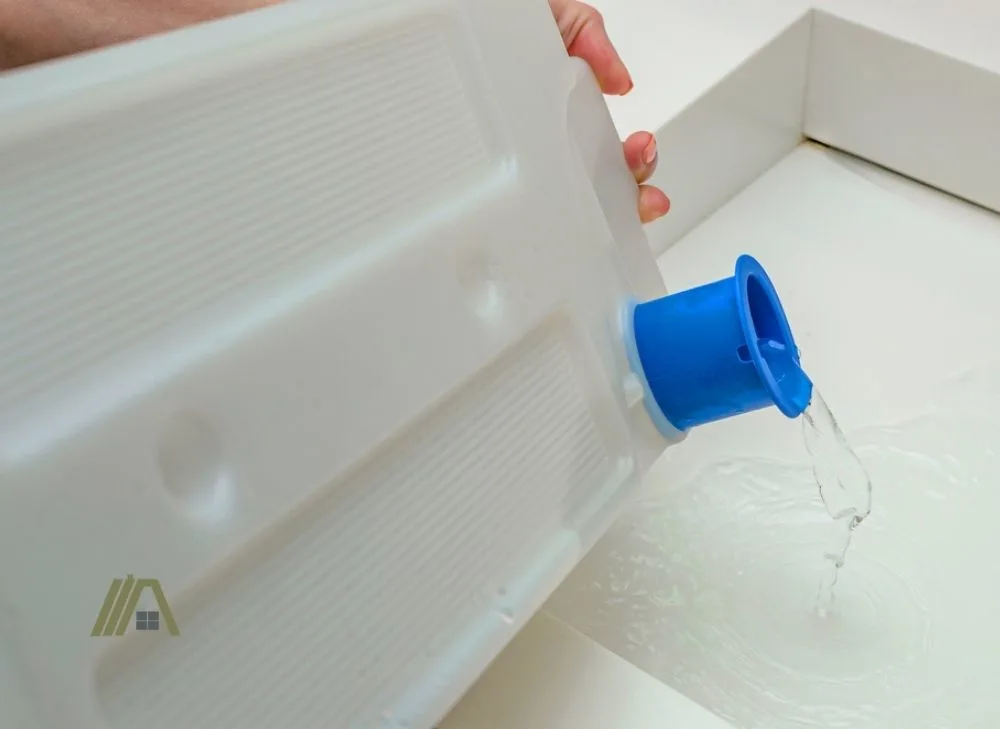Ventless dryers are a fantastic option for several reasons, whether you’re looking for a more efficient appliance or you live in a home where outdoor venting isn’t possible or desirable. That said, the idea of a dryer not expelling moisture can be a bit strange if you’re used to vented dryers. The water must go somewhere, right?
Ventless dryers turn steam back into water and collect it in a tray or drain it, depending on how the machine is installed. Let’s talk about how that works.

The hot moisture-filled air is cooled, causing water vapor to condense into liquid water. If the dryer is plumbed in, the water is then directed into a drain through a drain hose. Otherwise, the water is collected in a water collection container, which needs to be emptied manually after every cycle.
Water Is Condensed out of the Air
Before getting into the details, it’s important to note that there are two types of ventless dryers – condenser dryers and heat pumps.
Heat pump dryers are technically condenser dryers as well, since both collect water by condensing it after it is turned into steam. However, they are considered a separate category of ventless dryers, as they use a completely different method to heat and cool the air.
Condenser dryers use a heat exchanger to cool down the hot, steamy air within your dryer. This turns the steam back into water, which is then directed and drained away from the drum.
Heat pump dryers, on the other hand, use a constant, cyclical air filtration system to collect the moisture from your laundry.
Hot air used to dry your laundry is blown from the drum to then be pushed through a series of lint filters that remove any dust and lint the air collected during drying.
As the air moves past the lint filters, it is then pushed through an evaporator that extracts the moisture. After this, it is reheated, and renters the drum to continue drying your laundry.
This puts paid to the myth that they just release the water vapor into the room!

Condensed Water is Collected
Typically ventless dryers come with a collection tray, regardless of if they are heat pump or condenser models.
As the water is extracted from the air during the drying cycle, it is directed into this collection container. The tray will generally be located on the front of the dryer, in clear view with easy access.
It is important to note that depending on what model of dryer you get, your water collection container will only be able to hold so much liquid.
Most models will need the container emptied every cycle, but some may be able to hold two or three cycles’ worth of water. This may also depend on how large the loads you are drying are and how wet they were when you put them in.

Alternatively, you may be able to have some ventless dryer models plumbed in, but we’ll talk more about that below.
Water May Need to Be Emptied Manually
If you do not have your dryer plumbed in, then you will have to be vigilant about making sure to dump your collection tray after every cycle! Many ventless dryer models will let you know if the tray is full, and they will refuse to run.
However, you don’t want to leave the water standing for too long in general, lest the moisture creates a mold-friendly environment.
While emptying the collection tray is an extra step in your laundry routine, it does only take a few seconds. Plus, if you’re keen on reusing resources, there are things you can use your dryer water for instead of just pouring it down the drain.
For example, you could use your dryer water to:
- Mop the floors
- Wash carpets
- Wash out garbage cans (reduces smells, may help keep critters away)
- Water outdoor plants (only certain kinds)
Some Dryers Are Plumbed-In
As mentioned before, it is possible to have your ventless dryer connected to a drain hose and directly remove any collected water from the dryer. This is a little extra work, but it’s quite a simple and inexpensive job if it’s something you choose to take on yourself; ventless dryers don’t require drains.
The process will differ from model to model, but it will generally consist of simply disconnecting a hose/ connector, at the back of the machine, from the water collection container and connecting it to a drain hose.
The free end of the drain hose can then be extended to empty out over an existing drain.
While you won’t be able to collect your dryer water for reuse, if you weren’t planning to do so in the first place, you’ll probably find it to be much less of a hassle not having to remember to empty your collection tray out every cycle.
Some models will come with their own drain hose kit, while you may need to purchase a drain hose for others. Be aware of this when looking at different dryers!
Sources
https://www.albertlee.biz/blog/Guide-get-pumped-about-heat-pump-dryers
https://www.beko.co.uk/support/faqs/tumble-dryers/differences-between-heat-pump-and-condenser-dryer
https://www.coolblue.nl/en/advice/connection-dryer-to-drain.html
https://www.greenbuildingadvisor.com/article/heat-pump-clothes-dryers
https://products.geappliances.com/appliance/gea-support-search-content?contentId=35647
https://uakc.net/blog/all-you-need-to-know-about-ventless-dryers/
https://www.whirlpool.com/blog/washers-and-dryers/what-is-a-ventless-dryer.html

